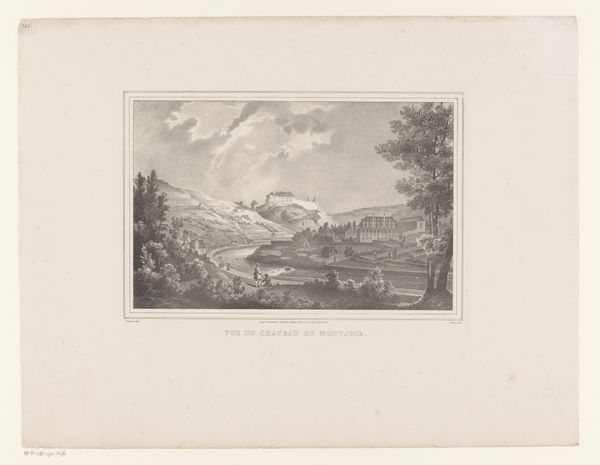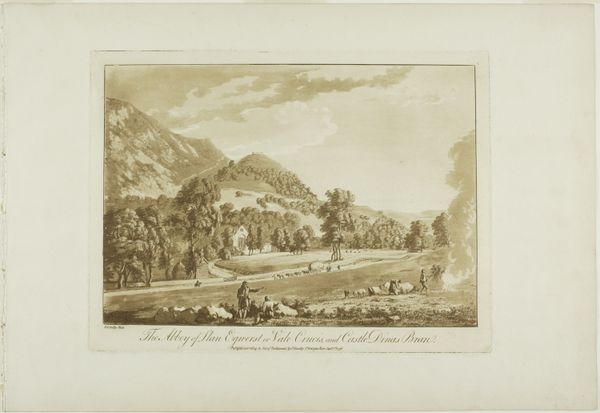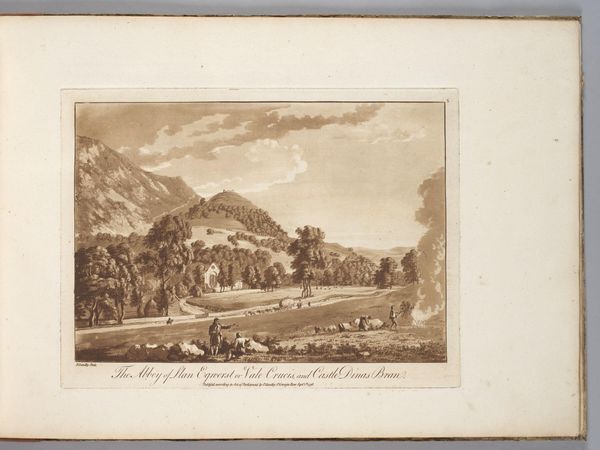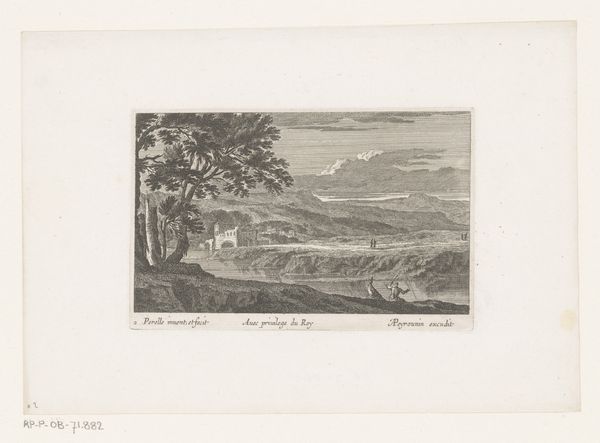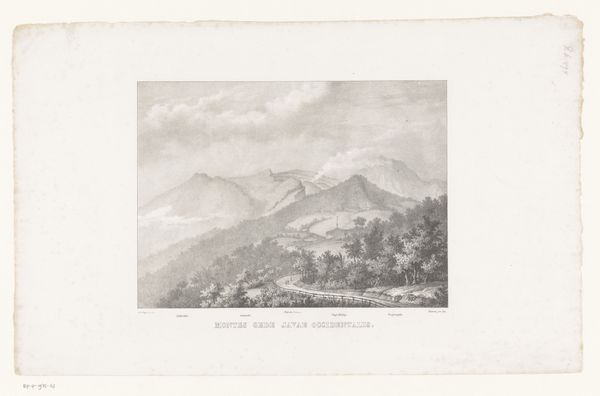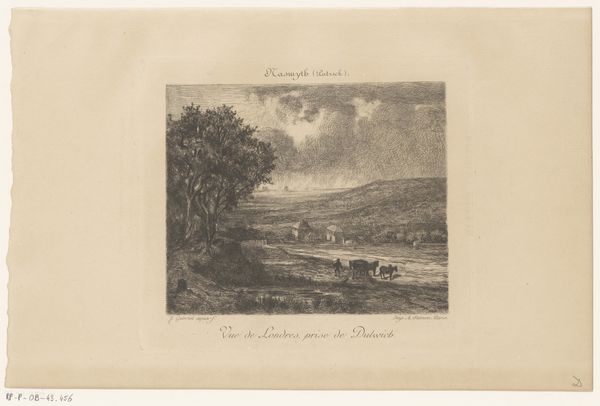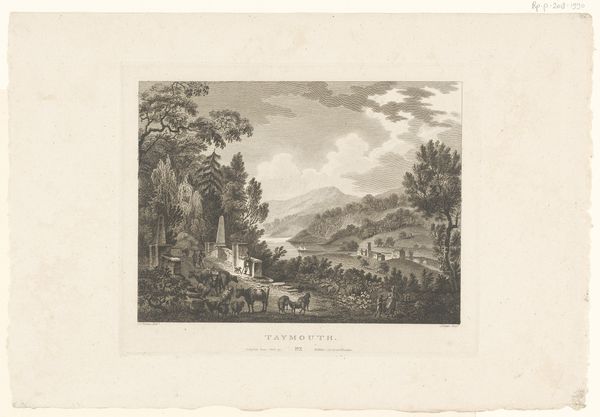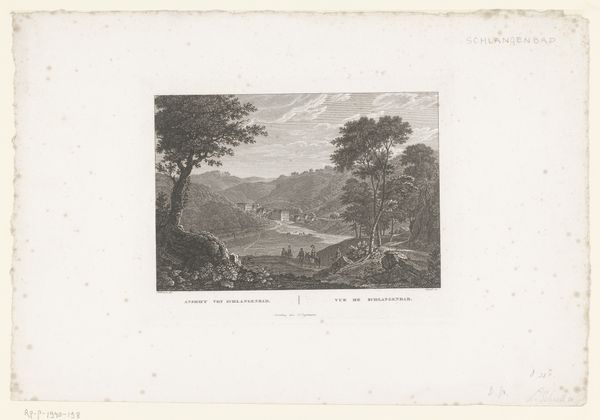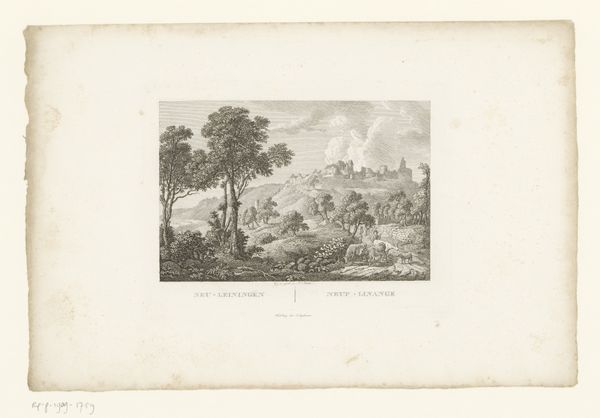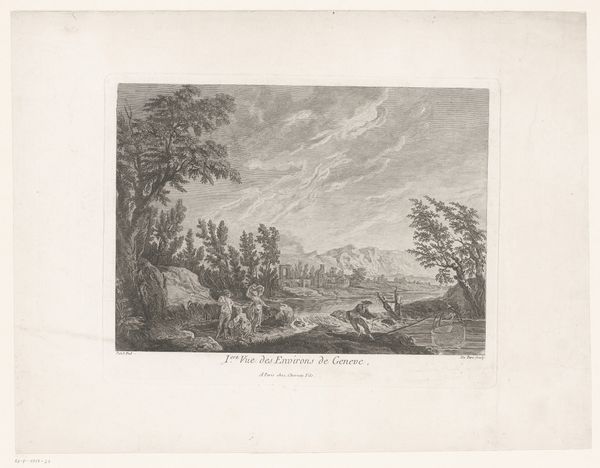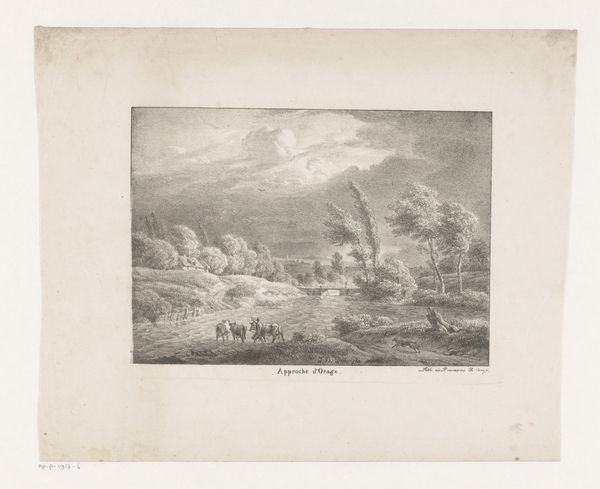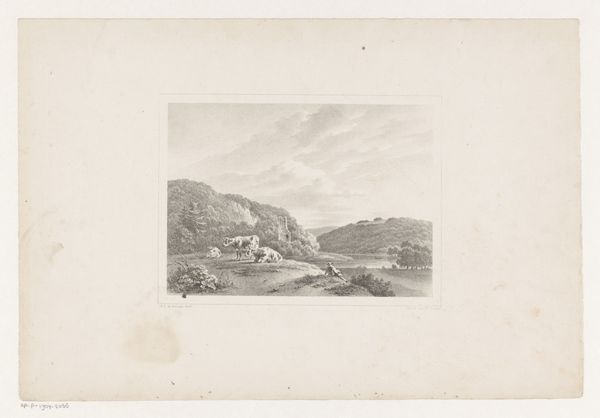
drawing, print, etching, paper, engraving
#
drawing
#
lake
# print
#
etching
#
landscape
#
paper
#
line
#
engraving
#
realism
Dimensions: Image: 5 3/16 x 7 15/16 in. (13.2 x 20.1 cm) Sheet: 9 1/4 x 12 3/16 in. (23.5 x 31 cm)
Copyright: Public Domain
Curator: This is "Lac Georges," a print made around 1824 by Charlotte Bonaparte, using etching and engraving on paper. It is currently held at the Metropolitan Museum of Art. Editor: There’s a quietness to this landscape, despite the evidence of labor in the cleared fields. The artist uses fine lines, creating a silvery light that softens the cut tree stumps and rustic fences. Curator: The choice of printmaking, particularly etching and engraving, is fascinating. It suggests a democratization of the image, moving it beyond unique artwork into something reproducible and therefore more accessible to a wider audience, a critical consideration for landscape imagery in this era. Editor: I'm immediately drawn to the contrast between the rough, hewn landscape in the foreground and the idyllic lake and mountains beyond. Those stumps could be symbolic. Do they represent the human impact on nature, or perhaps resilience and regrowth after adversity? Curator: Considering Bonaparte's own life in exile after her family’s fall from power, those stumps become particularly poignant. The material evidence of deforestation can be viewed not just as an environmental issue, but a comment on political and social upheaval—the reshaping of a nation. Editor: And the figures, rendered quite small in the middle ground, appear almost as observers themselves. Their placement invites the viewer to contemplate humanity’s role within a larger, timeless natural setting. They're not actively clearing or building; rather, they're paused. Curator: Exactly, we’re looking at the human imposition on the landscape, but with that momentary pause, we have an invitation to reflect. The etching process itself, the deliberate layering of lines, mirrors this gradual human interaction and reshaping of a place. Editor: I also see the reflection of light on water acting as a powerful, albeit common, metaphor, it points perhaps toward introspection, the self and other. All of this layering encourages sustained contemplation. Curator: This artwork is so compelling for its intricate web of material, artistic choices, and implied meaning that speaks both of place and wider ideas. It's far from just another picturesque scene of that period. Editor: Indeed. It gives the viewers plenty to think about: What happened there? How have people and places been transformed through interaction?
Comments
No comments
Be the first to comment and join the conversation on the ultimate creative platform.

